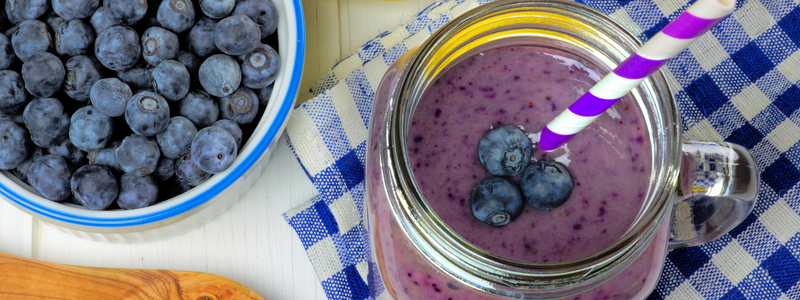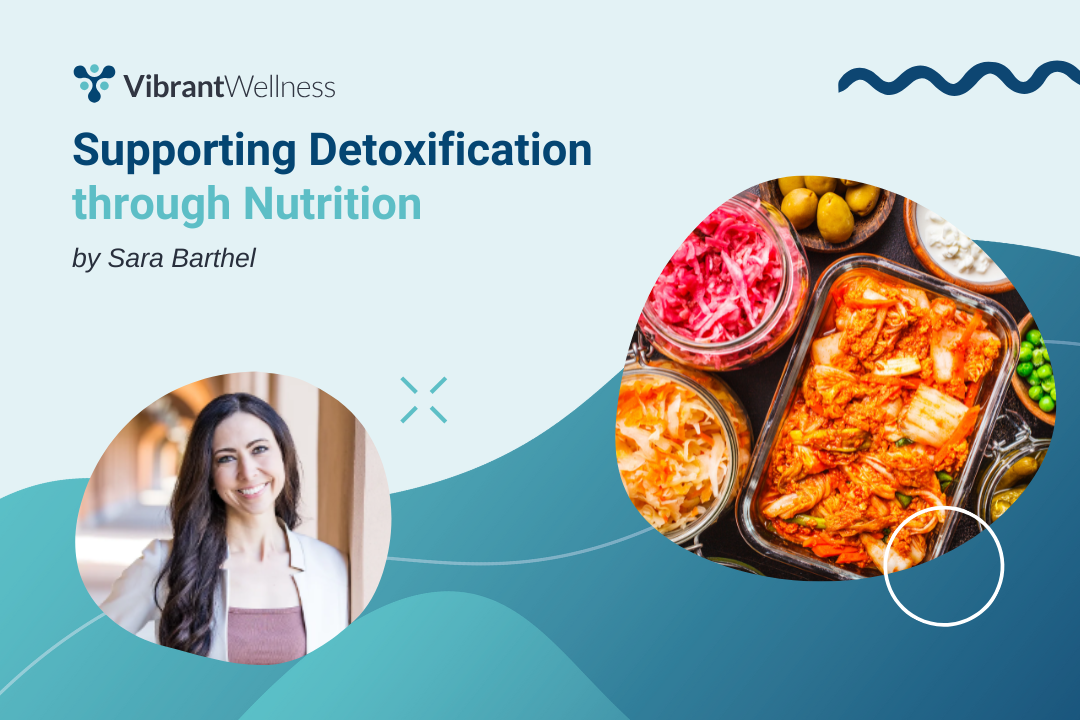How to Develop a Detoxification Food Plan [With Printable Food Plan]
Are you trying to help your patient detox? Whether it’s environmental toxins or bacterial overgrowth, the body can’t function properly when in a state of toxic overload.
This guide will lay out how to properly detox the body using nature’s best medicine: food. By identifying foods that are the most supportive for the detoxification process in the body, your patients will detox more efficiently and gain better results.
The detoxing process involves three distinct phases:
Phase One: Functionalization

The first phase of detoxification is called functionalization. This stage involves altering the toxic compounds in your body by adding reactive sites with the help of enzymes.
Phase One Focus:
The purpose of this reaction is to make the compounds more hydrophilic (water soluble). The reactions turn these toxic compounds into small molecules called intermediary metabolites and create reactive oxygen species in the body as a byproduct, which are addressed and detoxed in phase three.
Some examples of foods that support phase one of detoxification are:
- Acorn and butternut squash
- Artichokes
- Almond milk
- Dates
- Chickpeas
- Chicken
- Beef
- Salmon
- Eggs
- Rice
- Quinoa
- Hazelnuts
- Pumpkin seeds
- Avocado (fresh or oil)
- Bay leaves
- Coconut water
- Cocoa
Phase Two: Conjugation

The second phase of detoxification is conjugation, which involves adding a water-soluble group (endogenous hydrophilic substance) to the reactive site on the new molecule formed in phase one. Many different hydrophilic (water-friendly) compounds, using different enzymes, catalyze this step of detoxification:
- Glucuronidation
- Acetylation
- Glutathione conjugation
- Amino acid conjugation
- Sulfating
- Methylation
Phase Two Focus:
Phase two aims to make the metabolite more water soluble, increasing its ability to be eliminated from the body.
Some foods that support phase two of detoxification include:
- Potatoes
- Carrots
- Broth (bone, meat, or vegetable)
- Apricots
- Soybeans
- Pork
- Flounder
- Shellfish
- Gluten-free oats
- Almonds
- Flax seeds
- Olives (and oil)
- Curry powder
- Kimchi
Phase Three: Excretion

The last phase of detoxification focuses on excretion, which is the removal of toxins from the body through urine, bile (stool,) and the skin.
Phase Three Focus:
Phase three focuses on antioxidant-rich foods to offset the reactive oxygen species formed in phase one. Phase three also includes nutrients that are important for many of the detoxing pathways and chemical reactions happening in phase two. (Amino acid-rich foods for Amino acid conjugation, Glucaric acid-rich foods for glucuronidation, Sulfur rich foods for sulfation, etc.).
Foods to facilitate excretion are also included in Phase three to get the toxins out of the body (through liver -> bile-> intestines) by focusing on cholagogue foods (foods that promote bowel movements), high-fiber options, and probiotic-rich foods.
Note: some foods are phase one inhibitors that are not included. These might be appropriate if phase two detoxification is very slow and needs to speed up before focusing on optimizing phase one.
Foods that support Phase three of detoxification include:
- Non-dairy kefir/yogurt
- Beets
- Garlic
- Ginger
- Apple
- Chia seeds
- Flax seeds
- Cilantro
- Cinnamon
- Aloe vera
- Chlorella
Eliminate:
For Phase three, the patient should eliminate various foods from their diet. These include:
- Dairy
- Gluten
- High mercury seafood (only include seafood with mercury levels less than 0.2 ppm)
- Foods high in chemicals/environmental toxins, such as plastic packaging
Additional Detox Guidelines
- Organic: Choose organic, non-GMO foods to minimize the patient’s exposure to environmental pesticides, herbicides, and fungicides. Also, reduce other toxins commonly found in foods, such as the BPA lining on cans, plastic packaging, etc.
- Color: Emphasize colorful foods to increase antioxidants, phytonutrient compounds, and diversity in the diet.
- Optimize: Increase nutrients in your food by focusing on specific preparatory & cooking methods such as soaking and sprouting. Foods prepared using these methods include grains, legumes, nuts, and seeds.
Ideal cooking methods to optimize nutrients include steaming, braising, baking & roasting (avoid high heat), and pressure cooking (particularly for legumes).
Food Sensitivities
Lastly, patients should avoid foods that trigger an immune response. Consider food sensitivity testing to identify reactive foods.
Some tests to consider are:
- Food Zoomers:
- Wheat
- Corn
- Grain
- Soy
- Egg
- Dairy
- Lectins
- Seafood
- Mammalian Milk
- Peanut
- Nuts
- IgA+IgG Food Sensitivities
- IgG4 + C3D Food Reactions
- IgE Allergies testing
Download this printable detox food plan to help your patients stay on track.
Learn more about how our advanced, precision food sensitivity and wellness tests can improve patient outcomes.
 By
By


